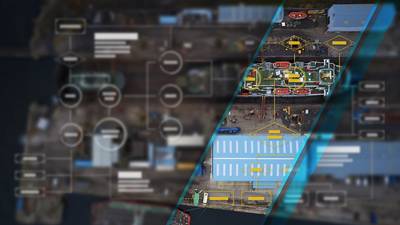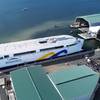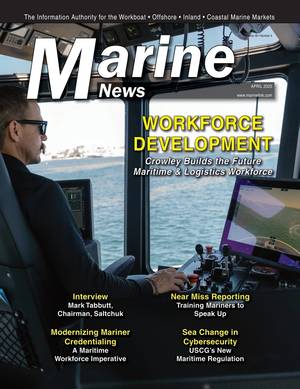Shipbuilding and the the Brain-drain Conundrum
How do you balance the fact that your skilled workforce will get older and retire and leave you with a group of younger individuals that will not have the "experience" that your more tenured employees have? Back in the day individuals would not pass down knowledge to younger workers in fear of being replaced. The days of reckoning are upon us. An older workforce is leaving with years of knowledge bottled up in their heads with no way to capture the information. What is the solution? Can brain-drain be mitigated?
Here is an example of brain-drain that every older individual can relate to. As a young man I learned to drive in a vehicle that had a standard transmission. The hard jolt of not shifting correctly is burned in my memory. The moment you cause a stall and must restart the car while other drivers glare at you in traffic. You learn quickly how to smoothly shift from one gear to the next just so this doesn’t happen to you again. Now imagine a 15-year-old, or for that matter a 20-year-old today getting into a car with a standard transmission. Their mind would be blown away with the little gearshift and the extra peddle down by the break. That is just a simple example of brain-drain. No one taught them because the technology of cars meant that we didn’t need standard transmissions any longer. Now imagine an entire workforce of an industry with no experience or knowledge being passed on to them. This is the brain-drain conundrum!
No other workforce in the construction industry is affected more by this conundrum than “Shipbuilding”.
Shipbuilding has been around for centuries, and it has gone through its cycles of innovation and improvement, but the basic tenants of shipbuilding stay consistent. That is until now. U.S. Shipbuilding is facing a two-fold attack. An ageing and retiring workforce paired with an ever-increasing demand for technological innovation. Once upon a time a shipbuilder could work his entire career in one place and retire while knowing he could have his own kids working in that same place for their entire career. Coupled with the instability of industry workloads and the ever-increased competition for those workload contracts, there has been an attrition to the industry. Some smaller yards that were once stable places of employment for community workforces have gone under. Either due to competition and lack of work or simply due to the lack of a replacement workforce with the knowledge to continue competing in the industry. The ever-present brain-drain.
This brain-drain is, simply put, an Aging Workforce with no replacement system to depend on. For example, the average age of maritime and shipyard workers is around 41-55 years old. These workers are closer to retirement than the start of a career. This is tied to the fact that most high school aged kids are pressured to attend college and not enter the physical labor workforce has led to the difficulty of the modern shipyard to find replacement workers. This also leads them to face a hard reality, either adapting to the ever-changing world or falling by the wayside. So, what can be done to mitigate the brain-drain conundrum? Several factors must be realized first before you can address the problem.
- Accessing what your shipyard workforce looks like. Is it a group of aging individuals who will walk out the door with the years of insight and knowledge that can hurt you going forward?
- Do you have a viable pipeline of talent coming through your doors? Compete effectively to attract and retain talent.
- Do you promote from within, and do you promote industry pride? A workforce that is proud of what they do is probably the best recruiting tool any industry has. It fosters community pride in their towns and cities and gets locals to want to stay and work for them.
- Do you have collaborations with industry associations and government agencies? Most shipyards are the local economic “blood line”, work in the shipyard fosters work in the communities in which they reside. These symbiotic relationships can build industry partnerships that gather interest for individuals to come to those areas and build their lives around the work.
- Do you have ways to automate and modernize? Investing in modernization and automation can be one of the biggest ways to mitigate “brain-drain” but also it can foster interest in new workforces to come to work for you. A cutting-edge company is very desirable to a young and upcoming workforce.
- Do you have retention strategies in place to keep workers? Nothing hurts a shipyard more than talented workers walking out the door. Developing a retention strategy should be fundamental. This could be apprenticeship programs to foster internal growth and development of the younger workers in your yard.
- Identify workers or candidates that will stay for the long haul. Look for candidates that are aligned with company values and goals.
- Clear paths to advancement are a talent magnet. Candidates who know they can advance with a company are more likely to stay with a company.
- Show your workforce that they are appreciated and recognize their achievements. Recognition goes a long way to fostering a workforce that wants to continue to grow.
- Provide your teams with ongoing learning opportunities. Skill workshops, career paths, mentorship programs. These are tied to the advancement portions that will keep skilled employees.
- Competitive compensation packages and benefits. Money will always be a big attraction to employees, but added benefits such as insurances and education opportunities can really retain a workforce.
These are just a few mitigation strategies that a company can implement to stop the brain-drain conundrum. We as an industry owe it to ourselves as well as the workforces we currently employ, to seek out new ways and strategies to keep and retain talent. If we don’t, the competitive advantage will shift to Shipbuilders in other markets. Local smaller shipyards and companies will be left with little choice but to outsource or downsize. Which is just another way of saying “slowly dying off”. Over the years the attrition to shipbuilding has been seen top to bottom with companies absorbing smaller entities or smaller yards just shutting the doors.
Although brain-drain is not limited to shipbuilding it may have a greater effect on this industry because of its inherent history. Comparatively, the construction industry is not beholden to a specifically trained workforce and can easily retain a dedicated workforce. While shipbuilders are a niche within the construction industry and are more specialized. Which is why the brain-drain conundrum affects them more. Gone are the days of the “family line” workforce that constantly replenish shipyard workers. Even with all the mitigation efforts companies can take to retain talented workers, it will come down to a company really getting to know its workforce and understanding what makes them want to stay or want to leave. Companies that recognize they are suffering from brain-drain can put mitigation plans in place and address retention problems.
Until then the “Brain-Drain Conundrum” could be with us for a while.











